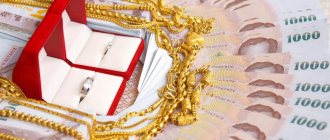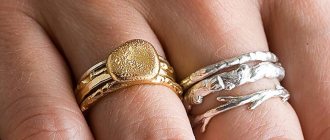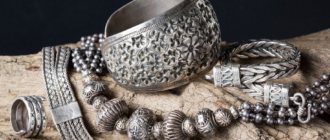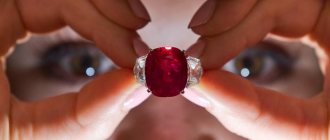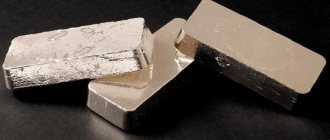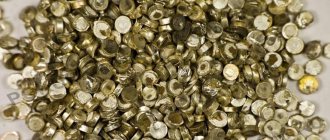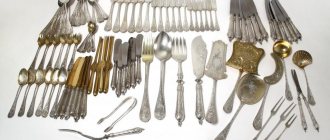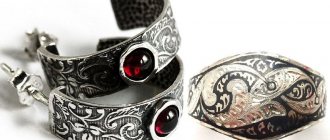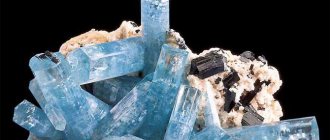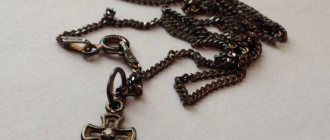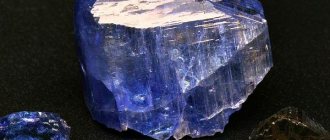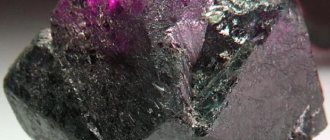Silver nugget
Silver
— Ag, a mineral of the class of native elements, crystallizes in the cubic system, cubic-hexoctahedral type of symmetry. It is found in argenites (sulfide) and horn silver (silver chloride), and is also mined as a by-product of the purification of cuprum and lead. Silver was one of the first metals mastered by man. It is an excellent conductor of heat and electricity. The main producer of silver is Mexico, although silver ores are scattered throughout the world.
- Structure
- Properties
- Reserves and production
- Origin
- Application
- Classification
- Physical properties
- Optical properties
- Crystallographic properties
See also:
Gold
— structure and physical properties
STRUCTURE
Crystal structure of silver
Cubic system; hexaoctahedral c. With. ZL44L636L29RS. Crystal structure. Face centered cube. The appearance of crystals. Properly formed crystals are very rare. Common forms: {100}, {111}. Doubles by (111). Aggregates. It is sometimes found in the form of typical “knitted” feathery dendrites, thin irregular plates and leaflets. Mossy, hair-like and wire-like forms are also characteristic. The most common grains are irregularly shaped and larger continuous clusters called nuggets.
PROPERTIES
Silver bars
The color is silver-white, often with yellow, brown or black tarnish. Silver from the surface oxidizes quite quickly in air and the faster the more impurities it contains, while the color of the surface changes to black with a tint of various shades. The luster is metallic to matte, the color of the streak is silver-white, shiny. Hardness 2.5 -3. Density 9.6 -12. There is no cleavage, the fracture is conchoidal. Very plastic, flexible, malleable. It has the highest thermal and electrical conductivity among metals. Is diamagnetic. Melts easily under a blowpipe. It reacts with HCl to form a white cheesy precipitate (AgCl). Reaction with H2S gives a black color.
Star preferences for lunar metal
Astrologers have always associated silver with our satellite the Moon. The purity, whiteness, secrecy and discreetness of the precious metal cannot but be associated with the same qualities of the Moon.
For zodiac signs, lunar metal is acceptable and useful. However, it will have the greatest influence on the signs of Water (these are Pisces, Scorpios, Cancers - their night ruler, the Moon). The “Wolf Sun,” as some peoples call the Moon, will provide water signs with subtle intuition and the ability to get around “sharp corners.”
Air signs will also receive the support of the night luminary. Just remember to take a break from lunar decorations sometimes.
We recommend: BRONZE - an alloy for all times and peoples
Earth and Fire signs can be treated with silver. But they are not recommended to constantly wear jewelry made of precious metal.
RESERVES AND PRODUCTION
Silver on acanthite, 2.3 x 1.8 x 1.1 cm, Peru, Uchucchacua mine
No large deposits are known in the USSR. Silver nuggets were previously found in the Turinsky mines in the Northern Urals, in a number of lead-zinc deposits in Altai, Kazakhstan, Eastern Siberia and other places. Of the foreign deposits, the following deposits were very famous: Kongsberg (Norway), where native silver was found to a depth of 900 m, Cobalt (Canada), Schneeberg (Germany). Mining of silver-containing ores can be done underground or open pit. First, using special instruments, prospectors check underground mines for minerals and precious metals. After discovering areas rich in silver, holes are made in appropriate places into which explosives are placed. The fragments of silver-containing ore raised by the explosion to the surface of the mine are crushed industrially. The precious metal is extracted from ore using the methods of amalgation and cyanidation.
We heal with lunar metal
People have known about the anti-inflammatory properties of silver for a long time. In America, Indians disinfected water with pieces of hot metal. And the white settlers of the New World put a silver coin in a pot of milk to prevent it from turning sour.
Silver coins
Interesting: in Russia, for this purpose, they took a frog from the nearest pond. And for good reason - research by chemists from Moscow State University has proven that amphibians secrete antimicrobial and antifungal substances into their skin.
Modern silver preparations (collargol, protargol) relieve:
- erysipelas;
- purulent conjunctivitis;
- rhinitis;
- purulent wounds.
The healing properties of the noble metal include the antiseptic and healing properties.
Caution: prolonged use of drugs with silver threatens argyrosis. With this disease, the skin and mucous membranes take on a silvery or bluish-gray color. Colloidal silver taken long-term and in large doses can cause pulmonary edema, bone marrow dysfunction, and even coma. We recommend: URANIUM - a metal for peace and war
Silver, like its patroness the Moon, favors women. Therefore, jewelry made from lunar metal will be useful for women during PMS who are prone to hysteria and inappropriate behavior.
Water has long been infused with silver and drunk. This water is useful for gastrointestinal diseases and throat diseases. Problems with the cardiovascular system should be treated by a doctor, but wearing silver jewelry (as esotericists say) will be useful.
Silver is now again attracting the attention of doctors. Water infused with a noble metal, if taken constantly, strengthens the immune system and does not suppress the intestinal microflora (which is the sin of all antibiotics).
And the ability of the precious metal to heal wounds and cuts has been used by doctors for a long time.
Silver water has a beneficial effect on the skin. It’s not for nothing that cosmetic companies produce product lines with “white gold”.
ORIGIN
Silver, width 1 cm, Morocco, Imiter mine
The formation of native silver in nature is in many ways similar to the formation of copper. It, along with other silver-containing minerals, is found in hydrothermal vein deposits in association with argentite (Ag2S) and calcite (Kongsberg deposit in Norway), sometimes in association with complex sulfur, arsenic, antimony compounds of various metals, including nickel and cobalt. Under exogenous conditions, it, like native copper, is found in oxidation zones of deposits of sulfur and arsenic-antimony ores, being a product of their decomposition and reduction from surface solutions by various organic compounds. The native silver formed under these conditions often has the form of dendrites, plates, mossy, wire-like, hair-like forms, etc. It has been experimentally proven that the finest thread-like and dendritic formations, sometimes in the form of beautiful patterns, are formed on pieces of coal from solution, especially in the presence of soluble organic connections. Under surface conditions, native silver is less stable than gold. It is often covered with black films and grease. In areas with a hot, dry climate, it often turns from the surface into stable halogen compounds (AgCl, etc.).
Silver in nature.
Also on topic:
GOLD
Silver is a rare element; in the earth's crust it is almost a thousand times less than copper - only about a hundred thousandth of a percent. It has been known for so long because it occurs in nature in the form of nuggets, sometimes very large. The Ore Mountains, the Harz, and the mountains of Bohemia and Saxony located in Central Europe were especially rich in silver. Millions of coins were minted from silver mined near the city of Joachimsthal (now Jáchymov in the Czech Republic). At first they were called “Joachimsthalers”; then this name was shortened to “thaler” (in Russia these coins were called after the first part of the word – “efimki”). Thalers were in circulation throughout Europe, becoming the most common large silver coin in history. The name of the dollar comes from the thaler. German silver mines were so rich that huge vases and table sets for hundreds of people were made from the mined metal, tons of silver were spent on each of them.
Legend attributes the discovery of silver mines in 968 to Emperor Otto I the Great (912–973), founder of the "Holy Roman Empire of the German Nation." While studying in Germany, M.V. Lomonosov heard this legend and outlined it in one of his works. Otto sent his huntsman Rummel into the forest to catch wild animals. At the edge of the forest, Rummel dismounted and tied his horse to a tree. While waiting for the owner, the horse dug up the ground with its hooves and knocked out heavy and light stones from there. When they were shown to the emperor, he realized that it was rich silver ore and ordered mines to be established in this place. And the mountain was named Rammelsberg... According to the testimony of the German doctor and metallurgist Georg Agricola (1494–1555), the deposit continued to be developed during his lifetime, that is, six centuries later, but almost all silver nuggets had already been found in the 14th–16th centuries. So, in 1477, in the Saxon district of Zwickau near the city of Schneeberg, a nugget weighing 20 tons was mined (modern geologists believe that it partially included the mineral argentite). Silver mines continued to operate during Lomonosov’s lifetime. Now they are largely depleted.
Also on topic:
METAL ARTISTIC
After the discovery and conquest of America, many silver nuggets were found in the territory of modern Peru, Chile, Mexico, and Bolivia. Thus, a nugget in the form of a plate weighing 1420 kg was discovered in Chile. Many elements have “geographical” names, but Argentina is the only country named after an already known element. The last of the largest silver nuggets were found already in the 20th century. in Canada (Ontario). One of them, called the “silver sidewalk,” was 30 m long and went 18 m deep into the earth. When pure silver was smelted from it, it turned out to be 20 tons!
Native silver is rarely found; the bulk of silver in nature is concentrated in minerals, of which more than 50 are known; in them, silver is associated with sulfur, selenium, tellurium or halogens. The main silver mineral is argentite Ag2S. Even more silver is scattered among various rocks, so that the bulk of the silver mined in the world is obtained as a result of complex processing of polymetallic ores containing lead, copper and zinc.
APPLICATION
Silver coins
Silver is used mainly in alloys with copper for the manufacture of silver items, coins, etc. Pure silver is used for filigree work, making crucibles for melting alkalis, for silvering, for obtaining chemical compounds and other purposes. The bulk of silver (about 80%) is mined not in native form, but as a by-product from silver-rich lead-zinc, gold and copper deposits. The areas of application of silver are constantly expanding, and its applications include not only alloys, but also chemical compounds. A certain amount of silver is constantly consumed for the production of silver-zinc and silver-cadmium batteries, which have very high energy density and mass energy intensity and are capable of delivering very high currents to the load with low internal resistance.
Silver - Ag
| Molecular weight | 107.87 g/mol |
| origin of name | Anglo-Saxon (Silber, silver, Gothic silubr), with a correspondence in Proto-Slavic (sеrebro) |
| IMA status | valid, first described before 1959 (before IMA) |
PHYSICAL PROPERTIES
| Mineral color | silver-white, on the oxidized surface dark gray turning to black |
| Stroke color | silver white |
| Transparency | opaque |
| Shine | metal |
| Cleavage | No |
| Hardness (Mohs scale) | 2,5-3 |
| Strength | malleable, plastic, drawn into a thin wire |
| Kink | No |
| Density (measured) | 10.1 - 11.1 g/cm3 |
| Radioactivity (GRapi) | 0 |
| Magnetism | diamagnetic |
Why is it important to know the hardness of metals?
When German geologist Friedrich Mohs created the scale we use today, he applied a simple principle to determine the hardness of any material: what materials can scratch it, and what materials it can scratch.
For example, platinum, which has a hardness of 4-4.5, can be scratched by all materials that have a higher Mohs scale. For example, topaz, which has a coefficient of 8, can alternately scratch any material that has a lower coefficient (for example, gold, the hardness of which is rated at 2.5-3 points).
From the table above you can see which metals can scratch others and which ones can scratch them. This is valuable information as it can tell you which precious metals can be stored together and which cannot.
Also, this information about the hardness of metals will help determine which products made from precious alloys are more reliable to wear.
